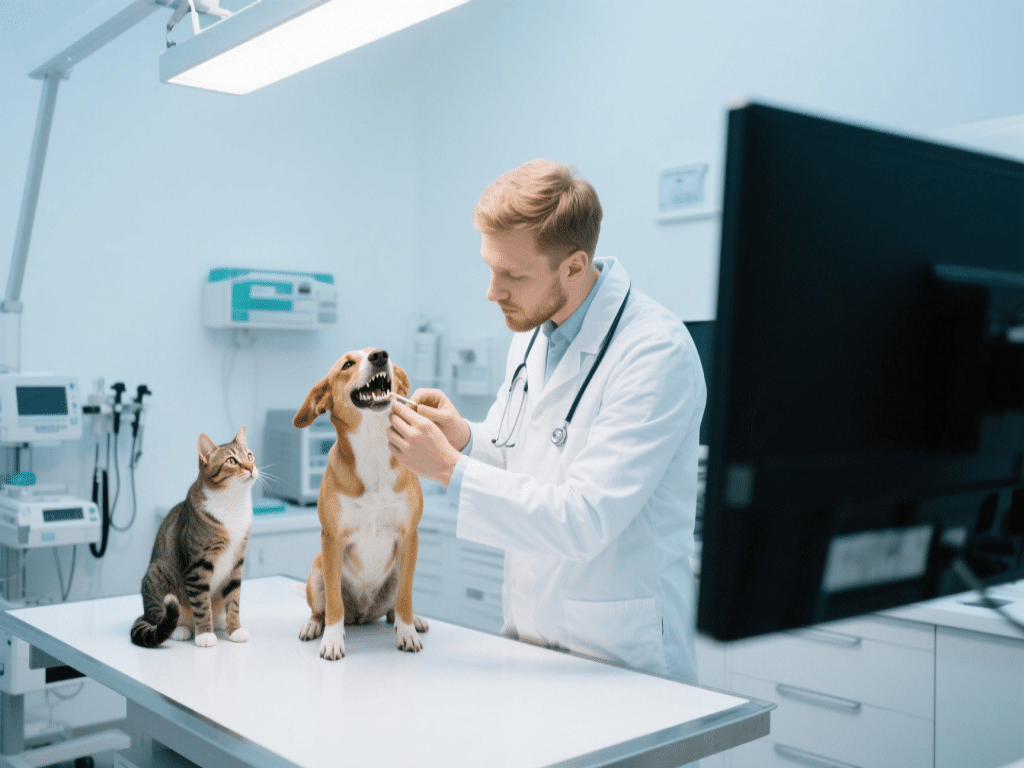Introduction
Oral health is fundamental to your pet’s overall well-being. Dental disease is among the most common issues in cats and dogs, often leading to pain, infection, and even systemic illnesses if left unchecked. Tartar (calculus) buildup is a key contributor to periodontal disease. This guide offers a comprehensive approach to preventing tartar, including professional recommendations, at-home care techniques, and nutritional strategies.
Anatomy of Pet Teeth
Dog Teeth:
Incisors: Front teeth used for nibbling.
Canines: Sharp teeth for tearing.
Premolars and Molars: Designed for grinding.
Cat Teeth:
Incisors: Small front teeth.
Canines: Long, pointed teeth for hunting.
Premolars and Molars: Fewer in number but essential for chewing.
Causes of Tartar Buildup
Dental Plaque: A biofilm of bacteria that adheres to enamel.
Mineralization: Salivary minerals harden plaque into tartar over 24–72 hours.
Dietary Factors: High-carbohydrate diets contribute to more plaque formation.
Breed Predisposition: Small breed dogs and certain cats (e.g., Persians) are more prone due to crowded teeth.
Signs of Dental Disease
Visible Yellow/Brown Deposits: Near the gumline.
Red, Inflamed Gums (Gingivitis): Early indicator of periodontal disease.
Bad Breath (Halitosis): Persistent odor despite brushing.
Drooling or Pawing at Mouth: Signs of discomfort or pain.
Difficulty Eating: Loss of appetite, dropping food, or chewing on one side.
Preventive Strategies
1. Professional Dental Cleanings
Frequency: Annual cleanings for most pets; biannual visits for high-risk breeds or those with existing disease.
Procedure: Under general anesthesia, veterinary technicians remove plaque and tartar with ultrasonic scalers, polish teeth, and may extract severely diseased teeth.
Benefits: Reduces bacterial load, prevents gingivitis, and allows oral examination.
2. At-Home Brushing Routine
Choose the Right Tools: Use a pet-specific toothbrush (finger brush or angled brush) and enzymatic toothpaste (never use human toothpaste).
Introduce Gradually:
Allow your pet to taste toothpaste.
Gently rub gums with your finger for a few days.
Introduce the brush slowly, brushing one or two teeth at first.
Brushing Technique:
Lift lips and aim the brush at a 45-degree angle toward the gumline.
Use small, circular motions, covering outer surfaces. Inner surfaces are less critical as saliva keeps them cleaner.
Aim for 2–3 times per week at minimum; daily brushing is ideal.
3. Dental Chews and Toys
Dental Chews: Select size-appropriate, veterinary-approved chews that promote mechanical scraping of teeth.
Chew Toys: Rubber or nylon toys with ridges can help dislodge plaque. Replace toys regularly to avoid fraying.
4. Diet and Nutrition
Specialized Dental Diets: Foods formulated with larger kibble size and texture to scrub teeth as pets chew.
Water Additives: Certain enzymatic additives reduce bacterial growth when added to drinking water.
Raw Bones (For Dogs Only): Raw marrow bones can help clean teeth but must be supervised to prevent choking and tooth fractures.
Monitoring and Maintenance
Regular Home Checks: Once a week, gently lift lips and inspect teeth and gums for new tartar or inflammation.
Weight Management: Obesity can contribute to oral problems; maintain a healthy weight.
Annual Oral Exams: Even if teeth look clean, veterinarians can detect early signs of disease under anesthesia.
Conclusion
Preventing tartar buildup in cats and dogs requires a combination of professional care, consistent at-home routines, and nutritional support. By implementing these strategies—professional cleanings, regular brushing, dental chews, and proper diet—you can minimize the risk of periodontal disease, ensure comfortable chewing, and promote your pet’s long-term health. Early intervention and consistent maintenance are key to a healthy smile and overall wellness for your feline and canine companions.










Comments on " Understanding Pet Dental Health: Preventing Tartar in Cats and Dogs" :